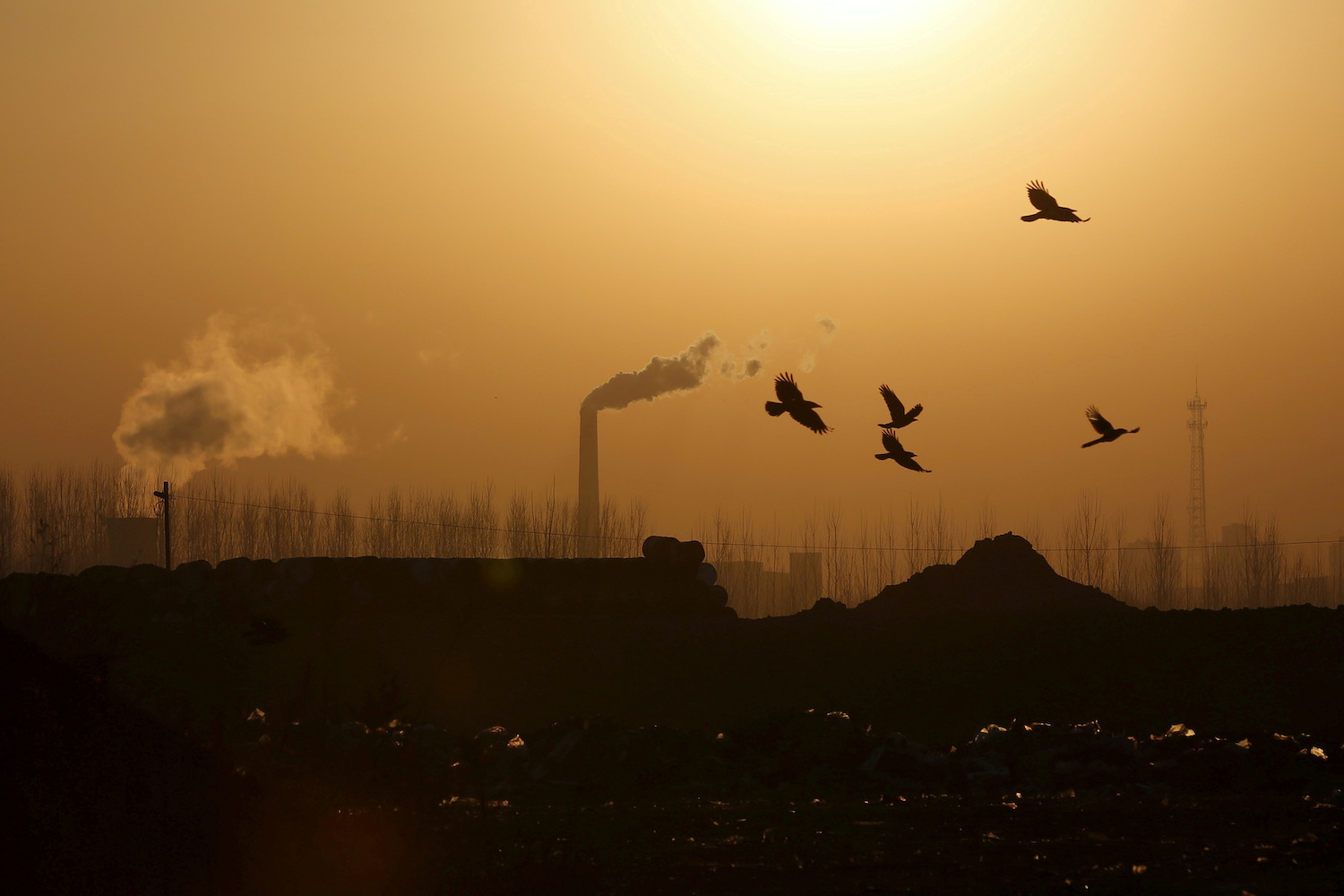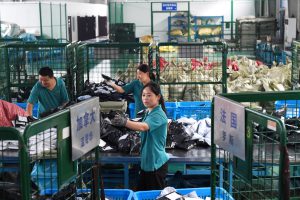(ATF) China’s first Five-Year Plan since its carbon neutrality pledge last September fails to set an emissions cap, and the reduction targets for “carbon intensity” and “energy intensity” set out in the plan are modest compared with the preceding five-year period.
Some climate advocates have expressed scepticism, saying China is taking “baby steps” towards its pledge to achieve carbon neutrality by 2060. Others say China is likely to over-achieve its targets like it usually does, and indicators on energy set in the new Five-Year Plan will still have an actual effect on restricting coal consumption.
Meanwhile, a central bank official warned recently that the pull-out of high-carbon industries in China might bring systemic financial risks, and urged early intervention from China’s banking and insurance systems to prevent the risks.
Following a week-long meeting, the National People’s Congress (NPC) of China formalised the “Outline for the 14th Five-Year Plan and Long-Term Targets for 2035” last Thursday – a key policy document that will not only heavily influence the nation’s economic development but also has huge impact on global carbon emissions and climate change.
The Five-Year Plan sets a 18% reduction target for “carbon intensity” – carbon emissions per unit of GDP – from 2021 to 2025. It also sets a 13.5% reduction target for “energy intensity”, which is energy consumption per unit of GDP.
China has set a slightly bolder renewable energy goal – 20% of its energy should come from non-fossil sources by 2025. This is a slight acceleration over the non-fossil energy buildout in the last five-year plan period, during which the percentage rose from 12.3% to 15.9%.
‘VERY GRADUAL PROGRESS’
Lauri Myllyvirta, lead analyst with the Helsinki-based Centre for Research on Energy and Clean Air, pointed out in a blog post that China’s reduction targets for “carbon intensity” and “energy intensity” do not represent an acceleration from past targets and trends.
The target for reducing “carbon intensity” fell from 18.8% from the 2015-2020 period, and that for reducing “energy intensity” is lower than the 15% indicator in the previous plan, he noted.
“Overall, the picture is one of very gradual progress in aligning China’s energy and emissions trends with the target of achieving carbon neutrality by 2060,” Myllyvirta said.
Typically, the government also sets an annual GDP growth target for the five-year period, which can be used to back-calculate absolute emissions growth. But this year, China only set a one-year goal for GDP to grow over 6% in 2021, which makes it more difficult to forecast the country’s emissions growth.
A GDP growth rate of 6% this year means China’s carbon emission will grow by 1.7%, which is about the same rate as the 2015-2020 period, Myllyvirta noted. Despite the economic slowdown caused by the pandemic in early 2020, China’s carbon emissions still grew by 1.5% in 2020.
“If there is a strong rebound in growth this year and the rest of the period averages 6%, carbon emission growth could even accelerate under these targets, compared with the past five years,” he added.
NO CARBON CAP YET
Some climate advocates that had hoped the plan would clarify the level at which China plans to peak its carbon emissions have voiced disappointment that the outline does not give an exact number on the “carbon cap”.
Instead, the plan said that China will “implement a system based primarily on carbon-intensity controls, with the carbon cap as a supplement”.
Yang Fuqiang, a researcher of the Institute of Clean Energy at Peking University, expects the government to formulate the carbon cap within the 14th Five-Year period via a “bottom-up” approach to formulate the carbon cap, which means each province and sector would determine its own targets and those would then be aggregated into a national carbon cap. This is a “more reliable plan” compared with a “top-down” approach, he told CarbonBrief, a UK-based website with a climate focus.
Ma Jun, director of the Institute of Public and Environmental Affairs (IPE), an environmental research NGO in Beijing, said another reason that China has not yet set a “carbon cap” target in the new Five-Year Plan might be that China has not yet conducted enough research on how to best achieve its new carbon neutrality goal.
Meanwhile, other experts say China has a history of overachieving its targets and this needs to be taken into account.
“Looking back, most of the targets – from renewable energy installed capacity through to CO2 intensity – were overperformed. We cannot calculate the trajectory simply based on the targets illustrated in the 14th Five-Year Plan outline and say that they will not be sufficient for [the 2060 climate neutrality pledge],” Hu Min, executive director of the Innovative Green Development Program, said.
Zou Ji, China president of the Energy Foundation, previously told Reuters that it is “very possible” that China could in reality reach the emission cap before or by 2025.
DIVISION OF INTERESTS
Many critics have noted that the Five-Year Plan does not resolve the division of interests between advocates for continued industrial growth and those fighting for climate progress in China.
The modest targets also appear to confirm some experts’ prediction that Beijing would give regions leeway to focus on growth and build new coal-fired power stations to head off energy shortages.
China put nearly 40 gigawatts (GW) of new coal-fired power into operation last year, three times the amount built elsewhere in the world, and it now has 247 GW under development.
The energy regulator was reprimanded in January for failing to control coal capacity, but with energy security a priority, it isn’t certain China will discourage new projects.
FEAR OF FINANCIAL RISKS
Besides concerns about economic growth and energy security, a central bank official said recently that the pull-out of high-carbon industries in China might bring systemic financial risks.
“The green and low-carbon development of China’s economy has become an inevitable trend. As the traditional high-carbon industries gradually pull out, the corresponding financial resources invested might be re-evaluated. This might bring systemic financial risks,” said Wang Xin, head of the research bureau at the People‘s Bank of China, at a recent forum in Shanghai, according to a report by state-owned Shanghai Securities News on Monday.
Authorities should pay close attention to changes in macro-leverage ratios and conduct more comprehensive and accurate risk assessments and stress tests on the financial system, Wang added.
They will also study the establishment of a dynamic risk warning mechanism for financial institutions, which would trigger early intervention from deposit-taking institutions and insurers to problematic financial institutions, Wang said.
Although the 14th Five-Year Plan is an important gauge of China’s commitment to tackling climate change in the near-term, the country’s intentions will be further clarified in the months ahead.
As is typical, by the end of the year China will also release specific five-year plans for energy and electricity – and, for the first time, the Ministry of Ecology and Environment will publish a climate five-year plan and an emissions-peaking plan. Those plans will provide more granular detail on some of the major outstanding issues that will dictate China’s emissions.
While addressing the general debate of the 75th session of the United Nations General Assembly via video in September, President Xi Jinping pledged that the nation will aim to be carbon-neutral by 2060. Under the 2015 Paris climate agreement, China will work toward ensuring peak emissions by 2030, before pushing for zero level by 2060.
This report was updated with further details on March 16.
ALSO SEE:
- China to launch national emissions trading scheme in mid-2021
- Beijing trips on its misguided energy build-out policy
- PBoC outlines shortcomings in China’s carbon trading scheme
- China must nix its coal addition to reach carbon neutral pledge
- New coal projects in China make up 90% of global total
- China hurting efforts to cut global emissions: US
- G20 nations give $77 bn a year to fossil fuel projects




















